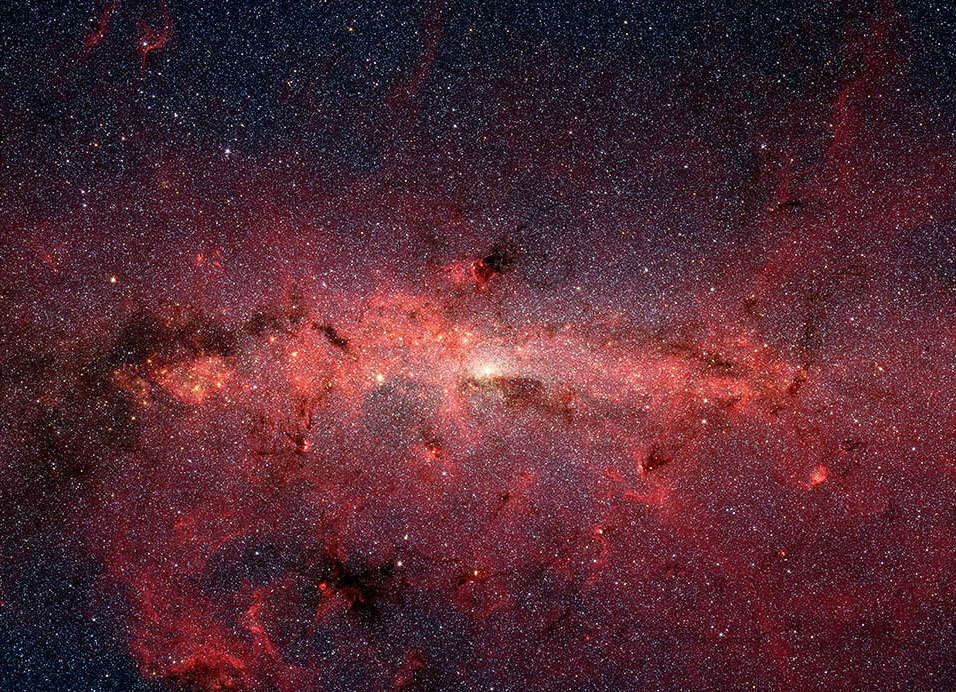 | |
|  |
|
|
| |
| A new view of the core, and old space dust | Jan 13, 2020 10:17 PM PST | url |
| | |
Added 1 new A* page:Mini space news roundup!
~~~~~~
First, NASA rolled out a new, sharp composite image of the core of our galaxy—that's where A* is, right in the middle—as seen from Earth. The image consists of infrared data, in blue and green, from SOfIA—a 'scope mounted in a 747—with previous infrared data from the Spitzer space telescope, shown in white, and the ESA's Herschel space observatory, shown in red (Herschel stopped operating in 2013). You can see Spitzer and Herschel images of the core separately, here (that's from 2006) and here. Here's the new composite image:

image by NASA/SOFIA/JPL-Caltech/ESA/Herschel
You can view a larger version in the article, or...well heck, let me just turn it sideways (the telescope is sideways in the 747, so there) and jam it in here:

While I'm at it, here's the 2006 Spitzer image:

~~~~~
The other item is that scientists found grains of space dust in a 1960s meteorite that are 7.5 billion years old—which means they formed in a supernova and were drifting in space for billions of years before our own Sun (4.6 billion years old) even formed, and are over half the age of the universe itself (13.8 billion years). It also means they're the oldest known material on Earth—but the scientists say it's quite likely there are other meteorites here with even older dust grains in them, they just haven't been found yet.
The scientists dated the grains by measuring how much Neon-21 they contained: that isotope forms when the dust is hit by high energy cosmic rays in space, so the more Ne-21 a grain contains, the longer it was drifting around.
The lead scientist added that "Thanks to these grains, we now have direct evidence for a period of enhanced star formation in our galaxy seven billion years ago with samples from meteorites." This helps answer the question of whether the rate of star formation in the galaxy has varied over time, as current theory would have it, or remained steady—based on this new evidence, it's looking like it has varied.
And, they also learned that "pre-solar grains often float through space stuck together in large clusters, like granola."
~~~~~~~~~
The original 16" x 6.75" watercolor art for today's new A* page is up for auction on eBay. : )
|
·····
|
|
|
